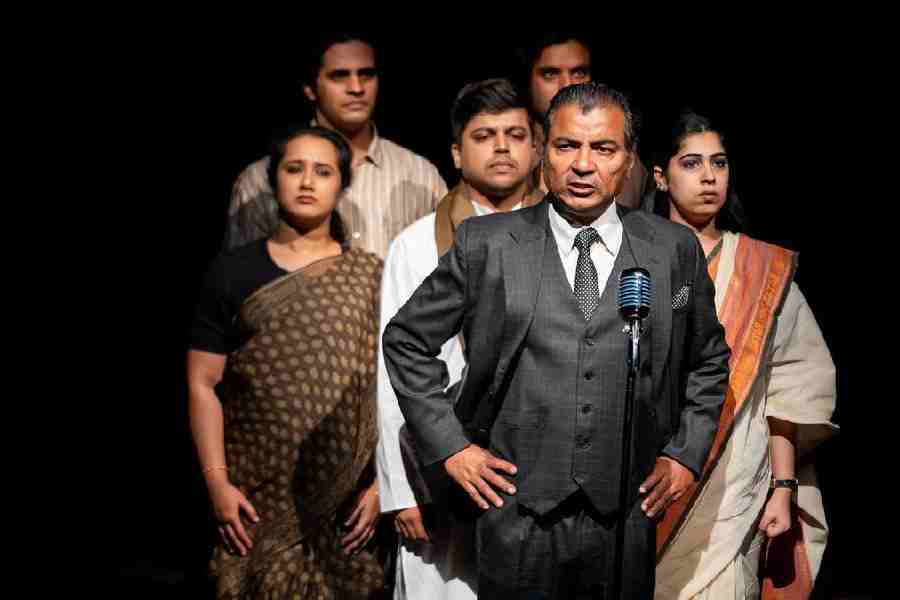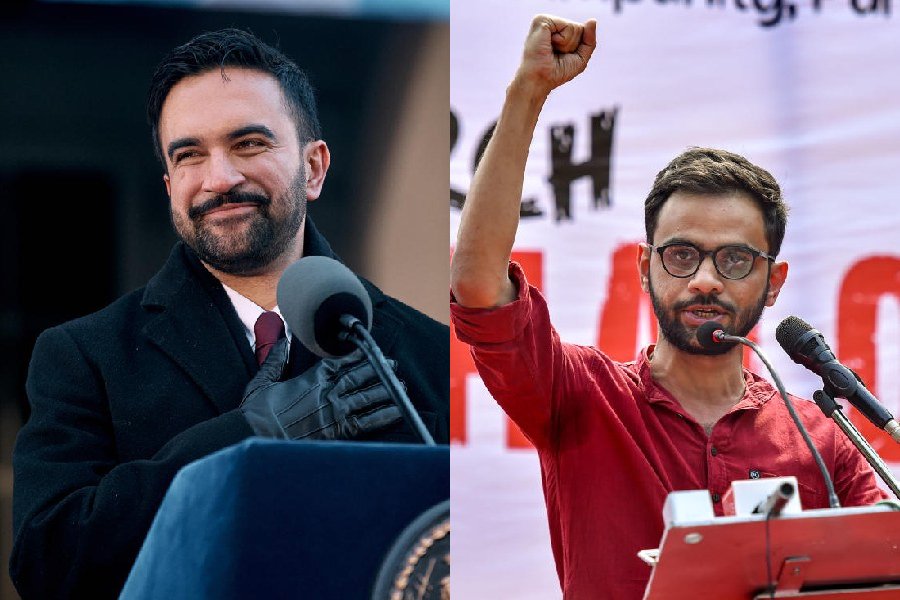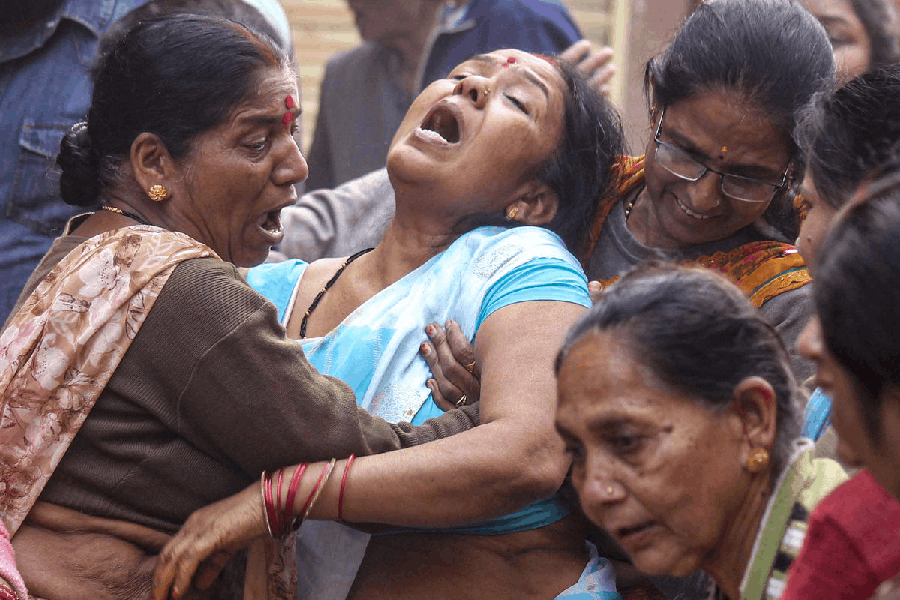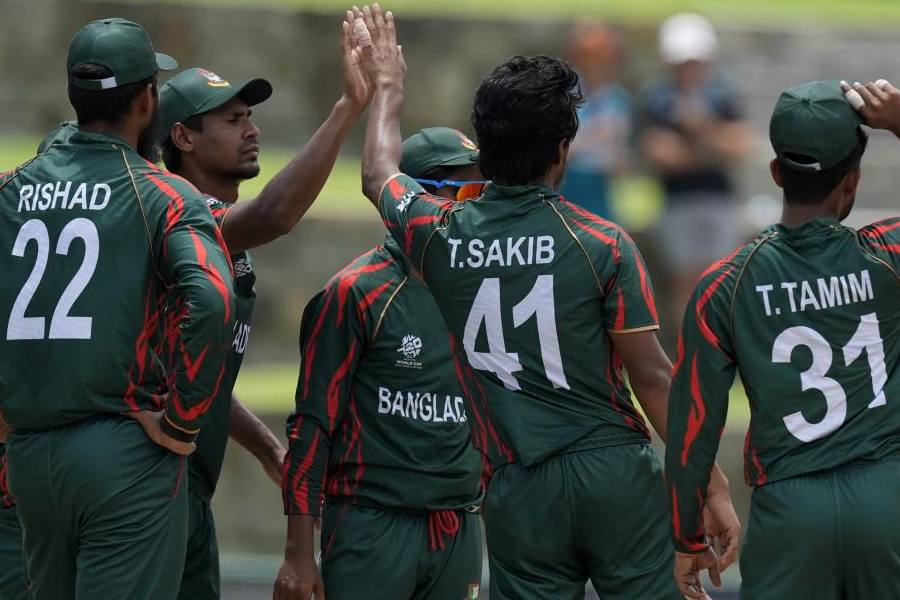The AMI Arts Festival, an initiative of the Kolkata Centre for Creativity and supported by Emami CSR, is maturing fast and, unlike many other large-scale enterprises, gives theatre the importance it deserves. The recently-concluded festival took place at the G.D. Birla Sabhaghar and the KCC amphitheatre, featuring four productions from this city and seven outstation ones. They were picked judiciously with an eye for excellence and the result was extremely satisfying.
Among the outstation productions, Main Pal Do Pal Ka Shayar Hoon, based on the life and times of Sahir Ludhianvi, was a major draw. Produced by Hoshruba Repertory (Mumbai) and directed by Danish Husain, this carefully crafted work lifted the veil over one of the most gifted lyricists of Hindi film music. It featured a first-person narrative in chaste Urdu in which Husain, playing an aged Ludhianvi, fielded questions from an interviewer in his drawing room, beside his writing desk, allowing the audience to time travel and soak in nostalgia. On another zone of the stage sat musicians in a recording studio, sharing popular anecdotes about Ludhianvi’s life and the making of some of his masterpieces. That they performed many of these songs live, including trailblazers like “Tadbeer se bigdi huyi taqdeer” and “Jaane woh kaise log the”, made this play a compelling watch. Although Husain gave a studied portrayal, upholding the dignity that the character deserves, it was the music that won more accolades.
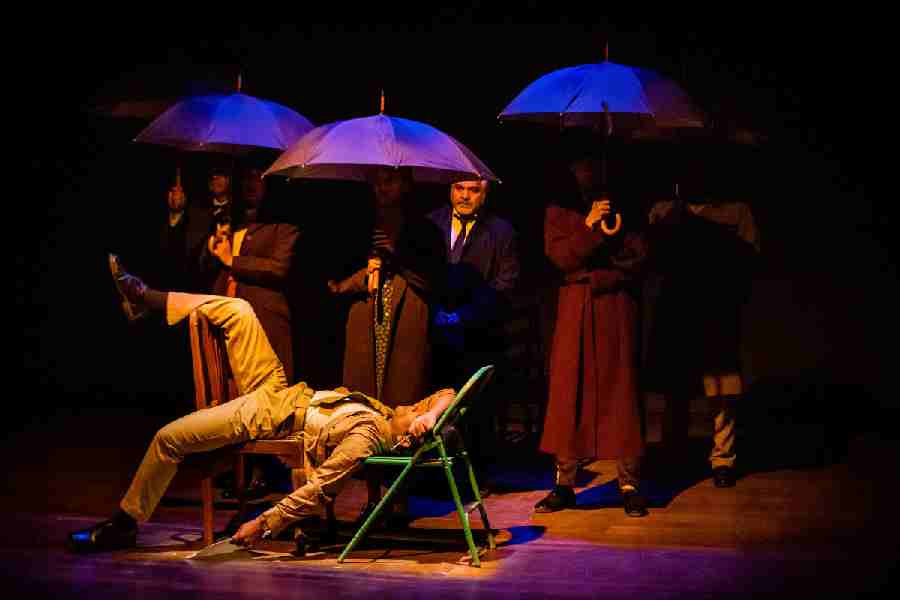
A moment from Taking Sides Source: Kolkata Centre for Creativity
D for Drama’s Purane Chawal, the other Mumbai import featuring two exceptionally talented actors, Kumud Mishra and Shubhrajyoti Barat, in leading roles, was an intelligent adaptation of Neil Simon’s two-act play, The Sunshine Boys. Skilfully directed by Sumeet Vyas, this reflective drama on the friendship and the fall-out between two veteran theatre artists found them at their most vulnerable. The lead pair had a regal comic timing and was aided by an able supporting cast and had subtle flashes of directorial ingenuity. Apparently mundane in content and with a desperate dose of sexual innuendoes thrown in, Purane Chawal rode merrily on the memories of public theatres in Mumbai where the comedians entertained packed houses for years together. How the pair sustained in their old age — balancing deceptions and idiosyncrasies — formed the crux of the play. The same group’s Patna Ka Super Hero was rooted in the roads of a rapidly transforming Patna and flaunted a sincere solo-performance by Ghanshyam Lalsa. But the text of the dramatist-director, Nihal Parashar, offered nothing new in terms of either content or treatment and sounded
rather filmy.
Taking Sides, the latest from Atul Kumar-led The Company Theatre, was easily the most fulfilling offering of the festival. Coming 12 years after Piya Behrupiya, a free-wheeling musical adaptation of Shakespeare’s Twelfth Night, which enjoyed a remarkable run inside and outside the country, this straight adaptation of Ronald Harwood’s masterly reflection on Germany after the fall of the Third Reich found Kumar taking a road hitherto not taken. And he succeeded. Strongly reminiscent of what is unfolding in present-day Bangladesh, Taking Sides was an interrogation drama that found the composer, Wilhelm Furtwangler (played with remarkable restraint and quiet dignity by Kumar himself), facing a desperate Major Arnold (played by a mercurial Sukant Goel). Even as we recalled Arun Mukhopadhyay’s Bengali adaptation of the same, Aapni Kon Dike, with fondness, Kumar’s version was a designer’s dream and a masterclass in method acting that will remain etched in memory for its ability to evoke historical times.

